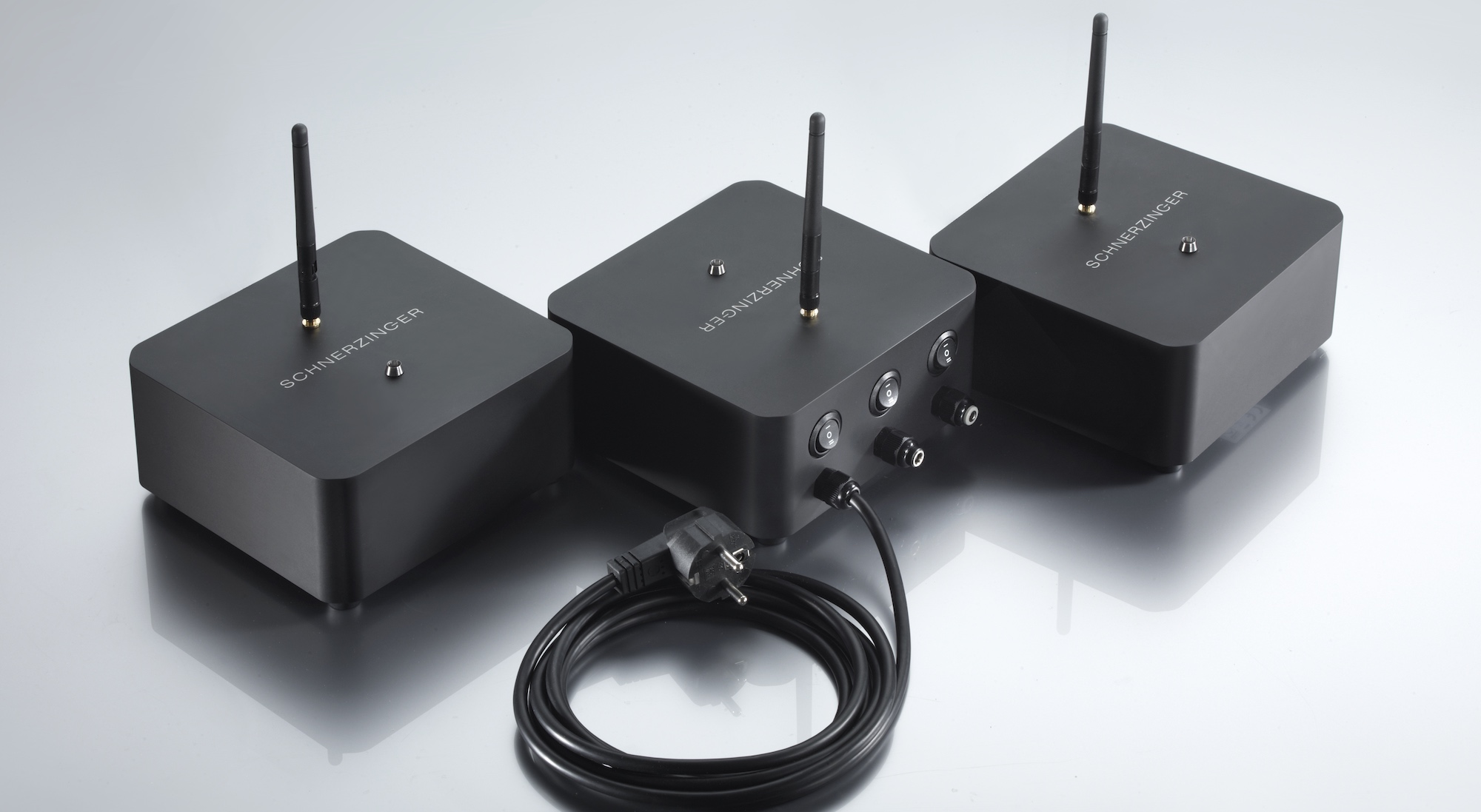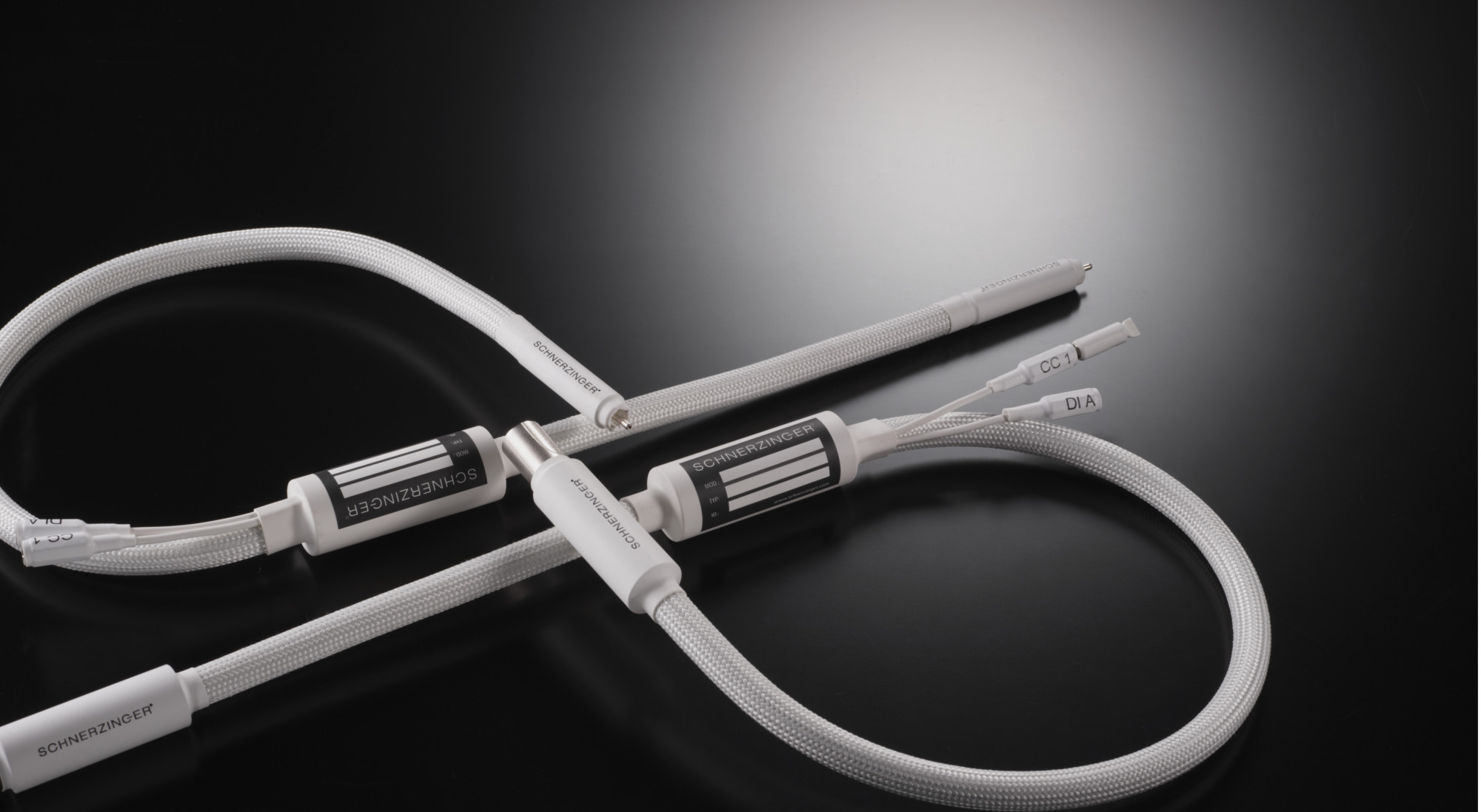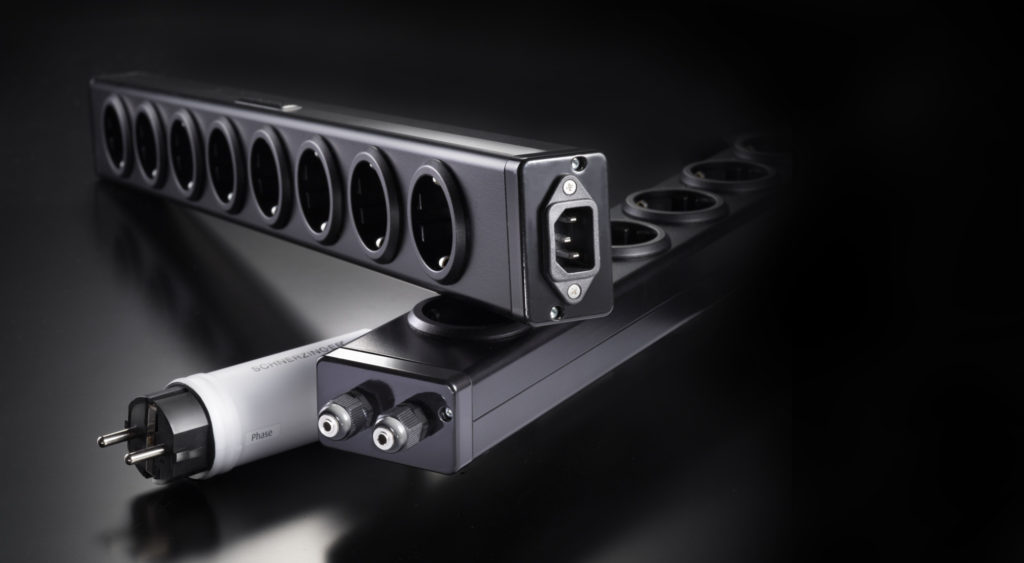Our products
Protectoren & Guards
With the PROTECTORS and their integrated trendsetting GIGA CANCELING technology, SCHNERZINGER has developed products that effectively prevent the sound impairments due to electrical interference fields caused by WLAN, mobile radio, power lines, etc. on the sensitive audio signal.
Cables
The secret of SCHNERZINGER cable technology lies in ATOMIC BONDING. This time-intensive formatting process, which takes several months, achieves an outstanding and durable conductor material quality that clearly stands out in terms of quality from established and conventional solutions in all sound-relevant criteria.
Power distributor
Thanks to ATOMIC BONDING formatted conductor material all SCHNERZINGER POWER PRODUCTS transmit even highest current pulse peaks full speed.
In addition, every SCHNERZINGER POWER PRODUCT forms an efficient protection against interference field transmissions due to the design-related BIDIRECTIONAL BARRIER.
Modern HiFi interference suppression
unrivaled, audiophile
The increase in radio-controlled transmission technologies through smartphone use, WLAN, PowerLan, etc. has led to an enormous high-frequency load in the living area. The requirements for interference suppression of the audio system have therefore changed fundamentally. In the past, it was mainly low-frequency interference fields that got into the audio system via the power grid. A line filter upstream of the devices was sufficient to achieve initial improvements.
Today, high-frequency interfering fields in particular radiate directly from the environment onto the audio system and impair the sound image. All power, signal and loudspeaker cables in the audio system act like antennas. They absorb the high-frequency loads in the room and lead them to the inside of the HiFi devices - directly into the signal path. Caution: Cable shielding that is effective against low frequency still supports this antenna effect at high frequency. Impacts on the sound quality are massive: there is a loss of resolution and dynamics, distortions of the overtone spectrum, etc.
Frequently used upstream line filters, power conditioning line generators or even battery solutions do not even detect these high-frequency loads. In addition, they usually reduce the signal bandwidth and speed of the audio system.
For these reasons, clearing up the high-frequency loads on the audio signal is the key to a profound, highly emotional listening experience.
Therefore, Schnerzinger has developed a comprehensive, compound system for the application areas POWER (power grid), COMPONENT (HiFi component) and ROOM (HiFi room), which completely eliminates these interfering fields - without any loss of signal speed or bandwidth
Our dedication
Product development in the last years was a long search for the perfect sound via time correct and interference-free signal transmission.
Development focus was the selection of absolutely perfect parts, their specifically technical optimization as well as the ideal composition of all components to the finished product.
Each step forward showed, how important the perfect conductor material grade and an interference-free environment are for an unparalleled listening experience.
The SCHNERZINGER technologies ATOMIC BONDING, GIGA CANCELING and BIDIRECTIONAL BARRIER are the results of intensive research with much enthusiasm and conviction.
Atomic
Bonding
The secret to SCHNERZINGER cable technology lies in what is termed ATOMIC BONDING. These time consuming formatting processes, lasting for several months, impart outstanding conductor material quality that sets itself apart - even from the very best cryogenically treated mono-crystalline OCC conductor material - in all sound-related aspects, in a manner that can best be described as startling.
Giga
Canceling
SCHNERZINGER GIGA CANCELING application is a trendsetting technology, processing electrical current in high speed right up to triple-digit gigahertz territory. Thereby a dejamming signal will be generated to effectively protect the environment from losing sound quality by means of scientifically physics.
Bidirectional
Barrier
SCHNERZINGER CABLE and POWER products are designed to work with a BIDIRECTIONAL BARRIER, which blocks or diverts radiated interference fields via the power supply, cables and components. The effectiveness of the BIDIRECTIONAL BARRIER can be further enhanced in critical environments by optional accessories.



